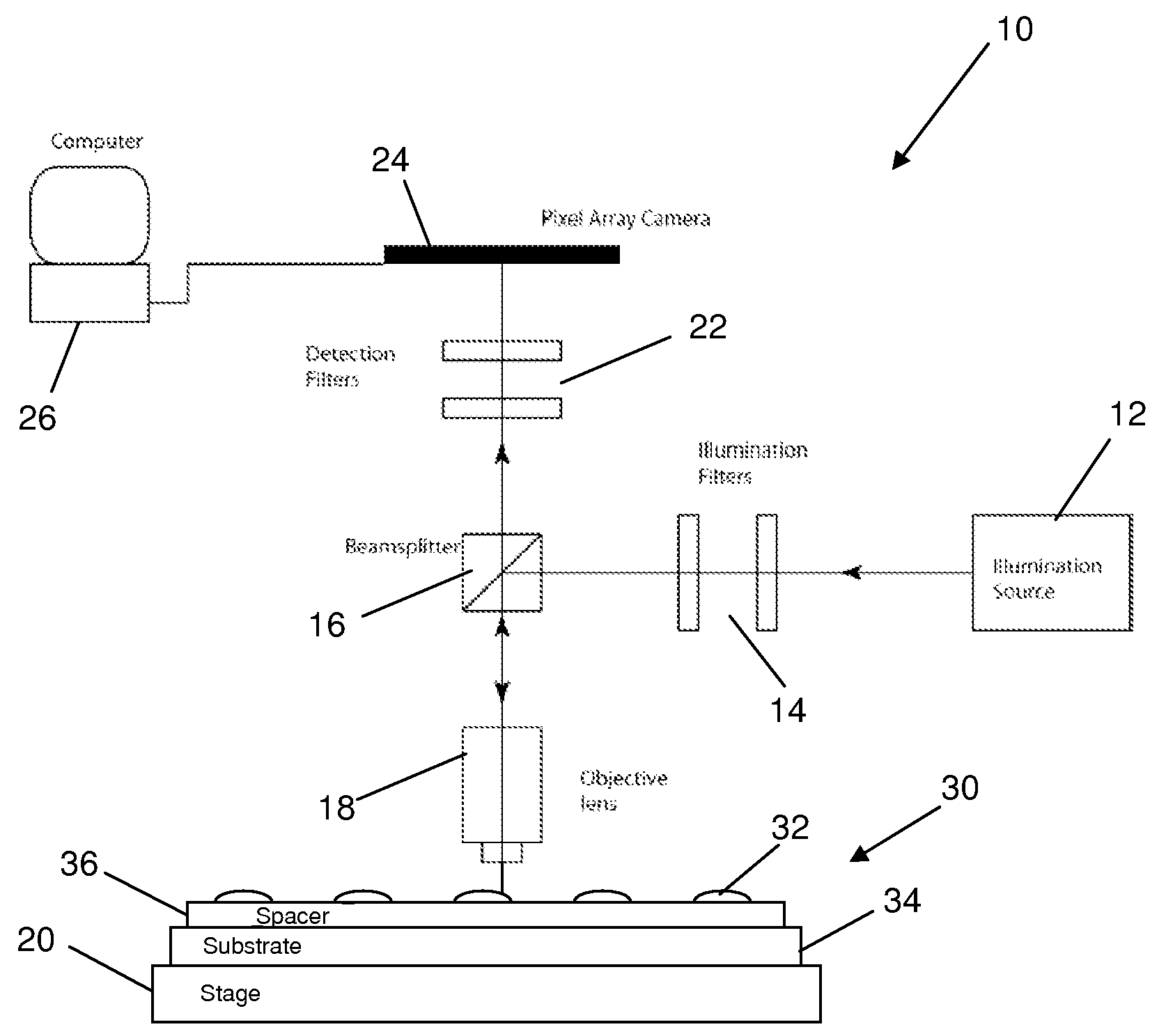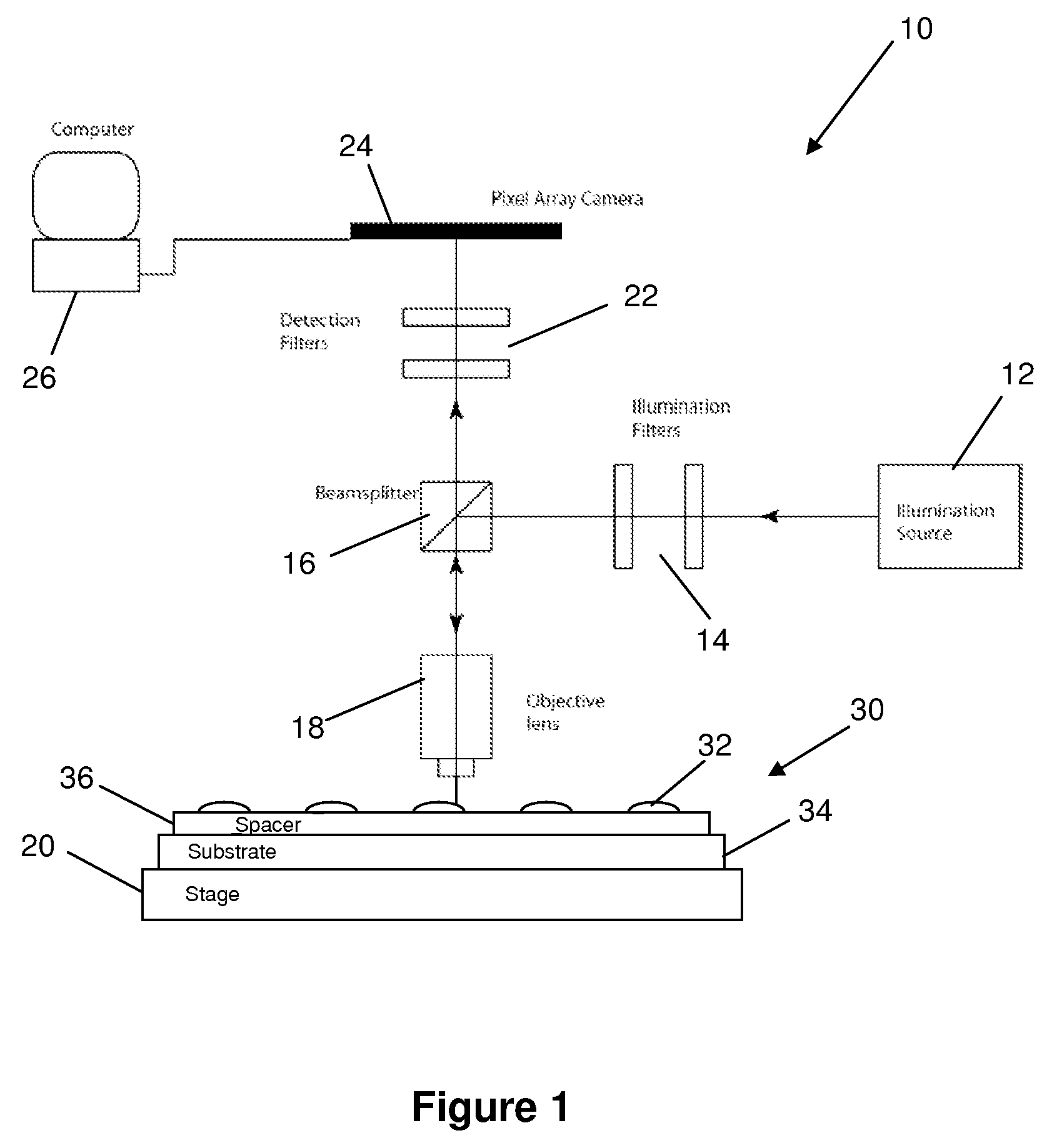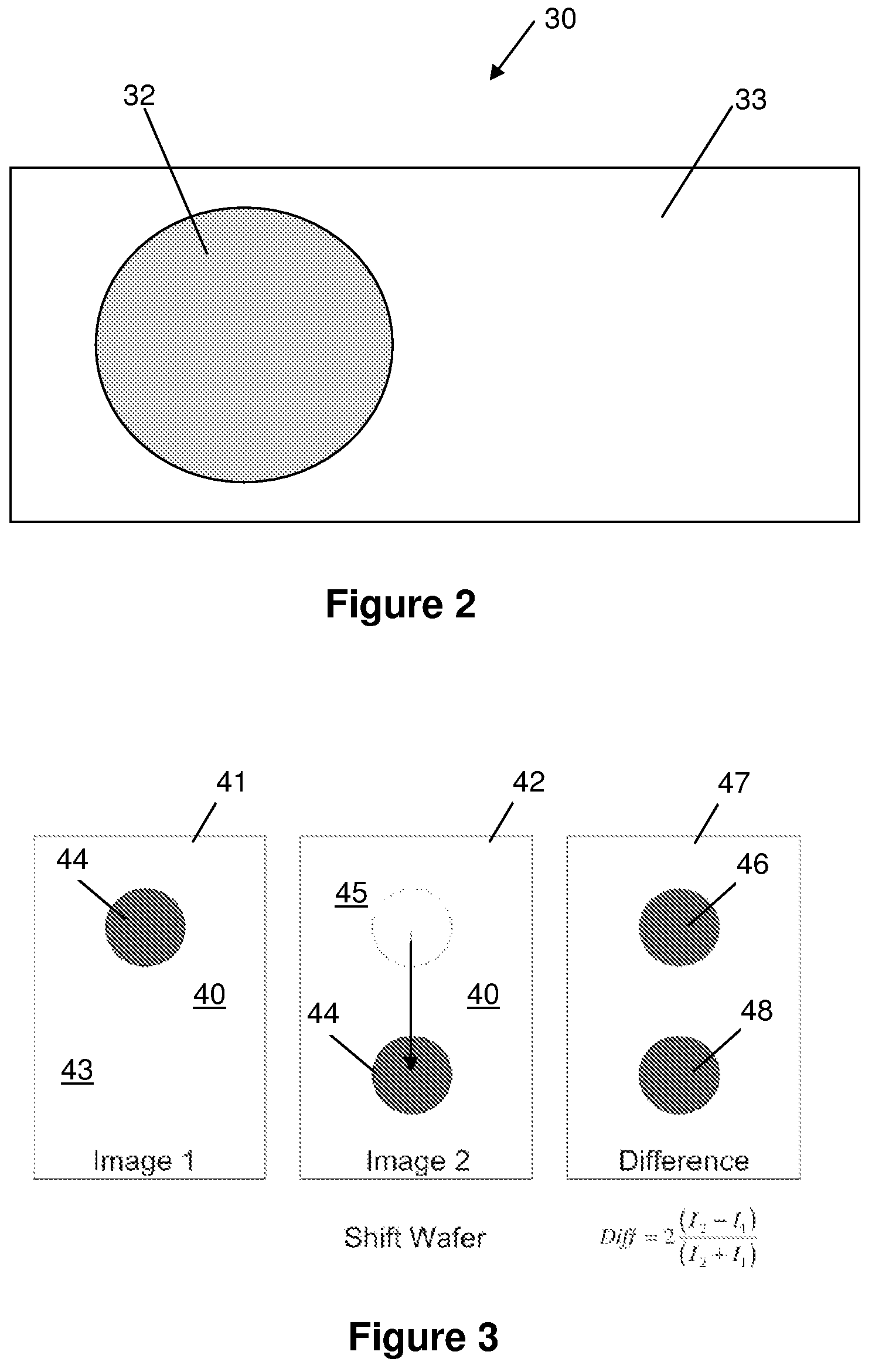Molecular interferometric imaging process and apparatus
a technology of interferometry and molecular structure, applied in the direction of phase-affecting property measurement, instruments, sampling, etc., can solve the problems of inability to pipe through flow-cells, incompatible laser scanning interferometric approaches with real-time kinetic capture of wet samples, time-consuming conventional laser scanning techniques, etc., to achieve high sensitivity, high-resolution optical detection, and high speed
- Summary
- Abstract
- Description
- Claims
- Application Information
AI Technical Summary
Benefits of technology
Problems solved by technology
Method used
Image
Examples
Embodiment Construction
[0028]The embodiments of the present invention described below are not intended to be exhaustive or to limit the invention to the precise forms disclosed in the following detailed description. Rather, the embodiments are chosen and described so that others skilled in the art may appreciate and understand the principles and practices of the present invention.
[0029]This application is related to U.S. patent application Ser. No. 10 / 726,772, entitled “Adaptive Interferometric Multi-Analyte High-Speed Biosensor,” filed Dec. 3, 2003 (published on Aug. 26, 2004 as U.S. Pat. Pub. No. 2004 / 0166593), which is a continuation-in-part of U.S. Pat. No. 6,685,885, filed Dec. 17, 2001 and issued Feb. 3, 2004, the disclosures of which are all incorporated herein by this reference. This application is also related to U.S. patent application Ser. No. 11 / 345,462 entitled “Method and Apparatus for Phase Contrast Quadrature Interferometric Detection of an Immunoassay,” filed Feb. 1, 2006; and also U.S. p...
PUM
 Login to View More
Login to View More Abstract
Description
Claims
Application Information
 Login to View More
Login to View More - R&D
- Intellectual Property
- Life Sciences
- Materials
- Tech Scout
- Unparalleled Data Quality
- Higher Quality Content
- 60% Fewer Hallucinations
Browse by: Latest US Patents, China's latest patents, Technical Efficacy Thesaurus, Application Domain, Technology Topic, Popular Technical Reports.
© 2025 PatSnap. All rights reserved.Legal|Privacy policy|Modern Slavery Act Transparency Statement|Sitemap|About US| Contact US: help@patsnap.com



